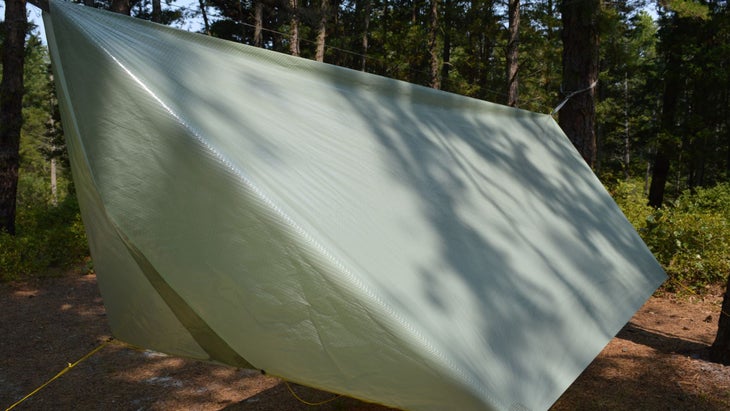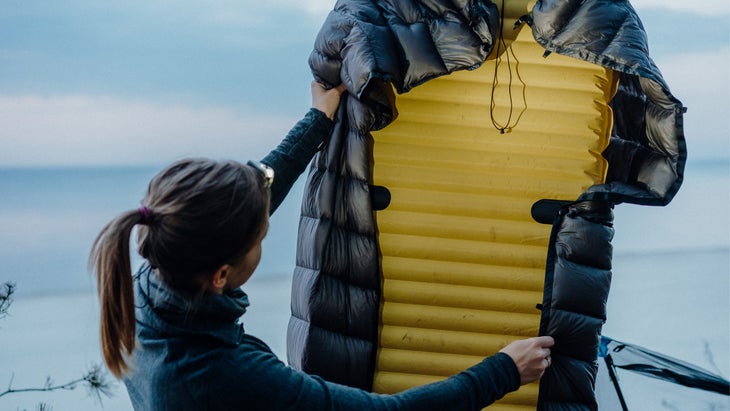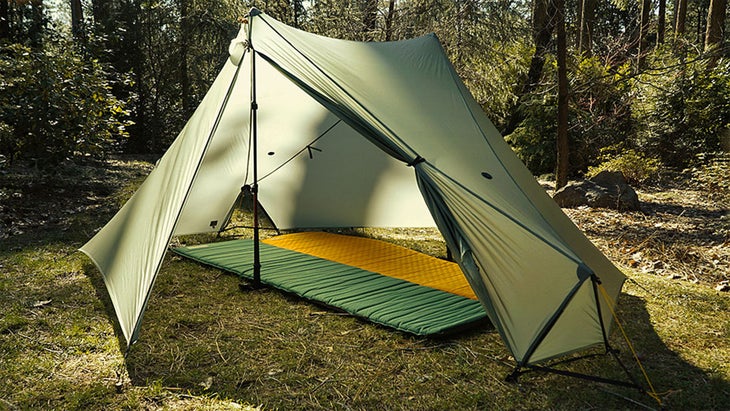“], “filter”: { “nextExceptions”: “img, blockquote, div”, “nextContainsExceptions”: “img, blockquote, a.btn, a.o-button”} }”>
Heading out the door? Read this article on the new Outside+ app available now on iOS devices for members!
>”,”name”:”in-content-cta”,”type”:”link”}}”>Download the app.
The ultralight side of the backpacking world continued to march on in 2023, with lightweight gear getting more and more accessible. Among the year’s biggest news: lighter (and cheaper) fabrics, an absurdly featherweight tent, and two new budget players from outside of the U.S. These were our most-read ultralight stories of the year.
Ultralight backpacking has seen a huge boost in popularity over the past decade. Frameless backpacks and tarp tents that once constituted only a niche part of the gear industry are now decidedly mainstream, and the ultralight cottage industry is busier and livelier than ever. All this growth begs the question: what’s next? To get the lowdown on the future of ultralight backpacking, we turned to a few experts—Dan Durston, who designs ultralight tents and packs under the moniker Durston Gear; Andrew McIntyre, the owner of cottage gear brand Superior Wilderness Designs; and Lloyd Vogel, co-founder of Garage Grown Gear, an online retailer for ultralighters. Here are their theories, hopes, and hot takes about where the world of ultralight goes from here.

The Whisper was simple to pitch, though I did have some trouble at first with drooping side panels, which shrank the interior space. After a bit of fiddling with the stakes and guylines (particularly, re-staking the guylines opposite the door and tightening the line on the door), things improved. I was also immediately impressed by the coverage the Whisper provided. The overall footprint was larger than I expected, and the sides of the tarps extend further to the ground than other superlight shelters I’ve used. An 8-by-10 foot Dyneema tarp might weigh an ounce or two less, but the Whisper provides better rain coverage than any pitch I’ve come up with for a flat tarp.

Big news in the ultralight backpacking world: Challenge Sailcloth, the fabric-maker that produces Ultraweave, the superstrong material found on many new ultralight backpacks, is releasing an even lighter-weight fabric designed for shelters. UltraTNT (for tarps and tents), is a high-tech composite fabric designed to rival Dyneema, the pricey, longstanding king of ultralight fabrics.

The category of ultralight sleeping bags and quilts is notoriously hard to improve upon. In many ways, sleeping bags are a solved product, and a quick glance through gear history proves it. Take Feathered Friends for example: the vaunted sleeping bag manufacturer has been around for more than 50 years, and its catalog has barely changed. In 1992, the brand’s 20 degree down bag, the Swallow, weighed 2 pounds, 2 ounces. The latest iteration weighs just 3 ounces less. So when a brand making down sleeping bags and jackets sees a surge in popularity, as Polish brand Cumulus is currently experiencing, it might be hard to pin down why.

Since it first caught on in the ’70s, silnylon has been instrumental in the creation of lightweight, budget-friendly backpacking gear. It’s used in tarps, tents, and rainflies, as well as dry bags, stuff sacks, pack covers, ponchos, and rain skirts, just to name a few. But in recent years, another fabric have begun to challenge silnylon’s dominance, especially as a shelter material. The competition? Silicone-coated polyester, or silpoly.

Spend enough time looking at backpacking gear on AliExpress and one brand will show up again and again: 3F UL Gear. Of all the direct-from-China brands, 3F seems the most legitimate. They offer packs with the classic ultralight silhouette—roll top closure, stretchy back pocket, two large side pockets—and constructed of Robic nylon or X-Pac. Their most popular tent, the Lanshan 1, is supported by trekking poles, made of 20-denier silnylon, and clocks in at 27 ounces. 3F started much like our favorite cottage brands: a couple of committed backpackers designing ultralight gear, first for their friends, then for the growing market in China.
